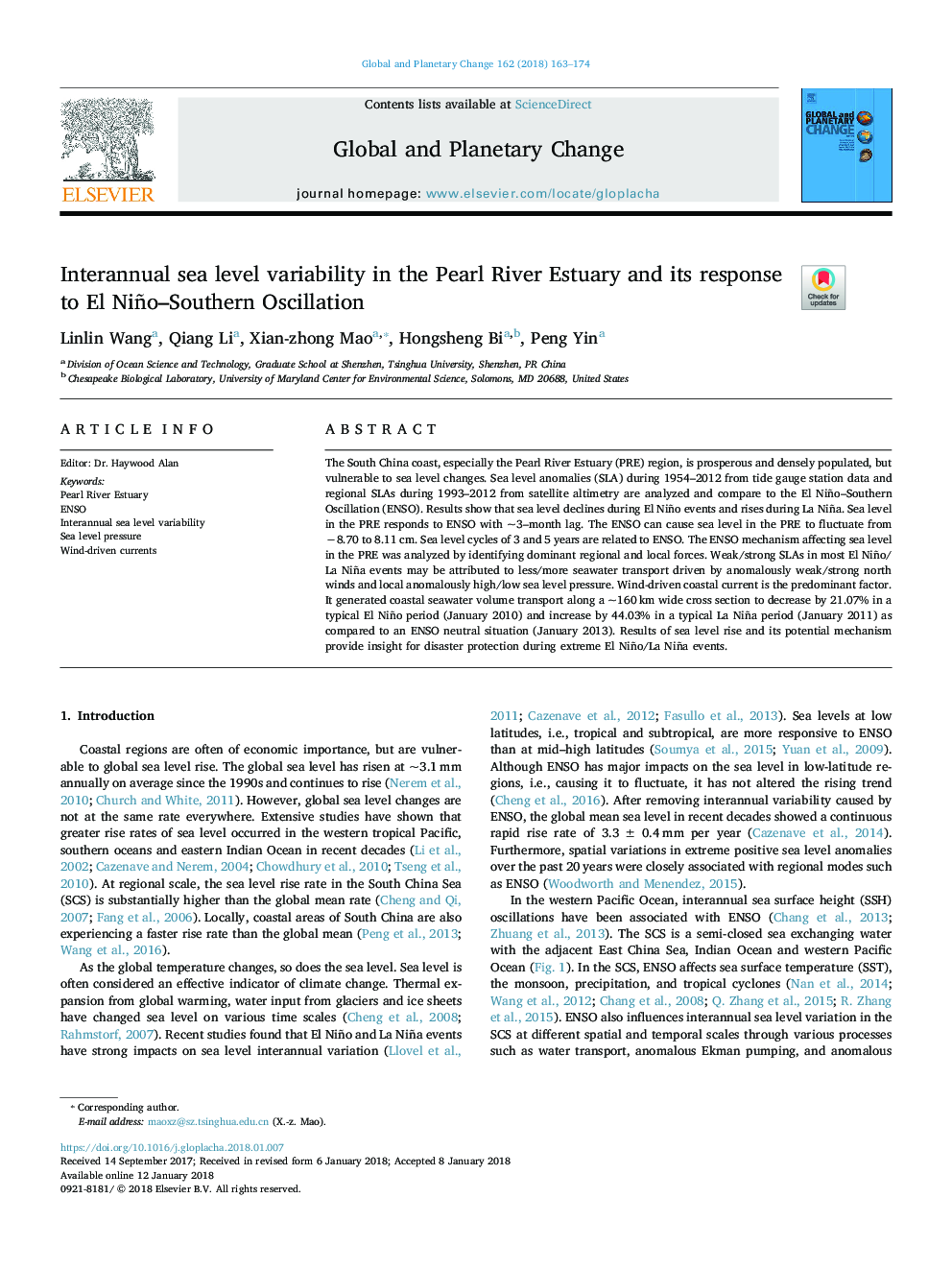| Article ID | Journal | Published Year | Pages | File Type |
|---|---|---|---|---|
| 8867578 | Global and Planetary Change | 2018 | 12 Pages |
Abstract
The South China coast, especially the Pearl River Estuary (PRE) region, is prosperous and densely populated, but vulnerable to sea level changes. Sea level anomalies (SLA) during 1954-2012 from tide gauge station data and regional SLAs during 1993-2012 from satellite altimetry are analyzed and compare to the El Niño-Southern Oscillation (ENSO). Results show that sea level declines during El Niño events and rises during La Niña. Sea level in the PRE responds to ENSO with ~3-month lag. The ENSO can cause sea level in the PRE to fluctuate from â8.70 to 8.11â¯cm. Sea level cycles of 3 and 5â¯years are related to ENSO. The ENSO mechanism affecting sea level in the PRE was analyzed by identifying dominant regional and local forces. Weak/strong SLAs in most El Niño/La Niña events may be attributed to less/more seawater transport driven by anomalously weak/strong north winds and local anomalously high/low sea level pressure. Wind-driven coastal current is the predominant factor. It generated coastal seawater volume transport along a ~160â¯km wide cross section to decrease by 21.07% in a typical El Niño period (January 2010) and increase by 44.03% in a typical La Niña period (January 2011) as compared to an ENSO neutral situation (January 2013). Results of sea level rise and its potential mechanism provide insight for disaster protection during extreme El Niño/La Niña events.
Related Topics
Physical Sciences and Engineering
Earth and Planetary Sciences
Earth-Surface Processes
Authors
Linlin Wang, Qiang Li, Xian-zhong Mao, Hongsheng Bi, Peng Yin,
